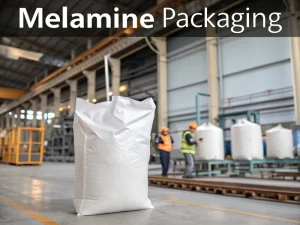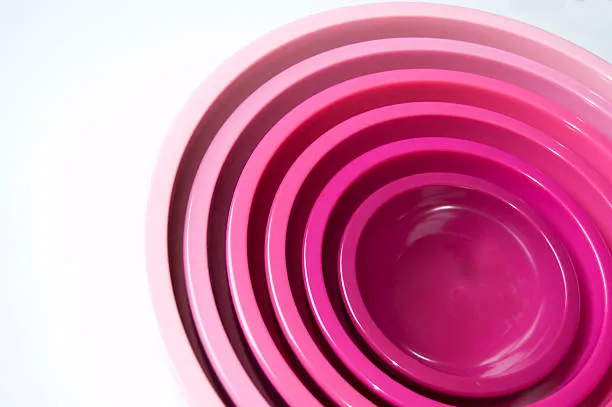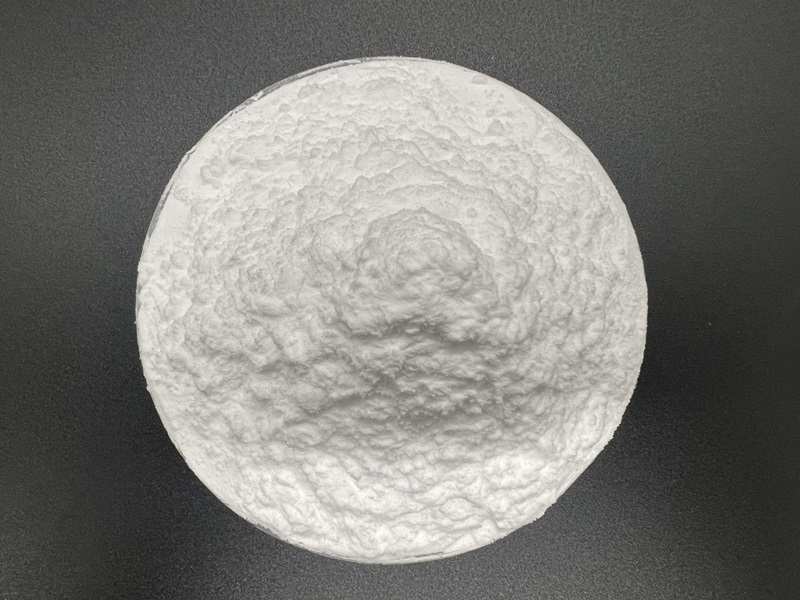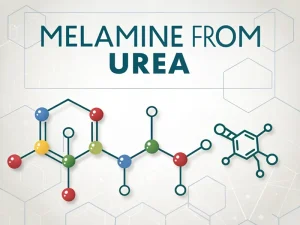
Melamine Packaging
Tech Blog Melamine packaging For manufacturers, inaccurate packaging not only fails to meet national standards but also increases labor costs and the risk of product

Melamine and plastic are both widely used materials in various applications, especially in the production of household items and tableware.
Understanding the differences and similarities between them is important for making informed choices. In this article, we will compare melamine and plastic and discuss the questions”Is melamine plastic”and “Is melamine better than plastic”.

Melamine powder is an organic compound with the chemical formula C₃H₆N₆. It is a thermosetting plastic that is typically made by polymerizing melamine and formaldehyde. It is known for its versatility and is used in the production of a wide range of products.

Tableware: Melamine tableware is lightweight, sturdy, and available in vibrant colours. It is a popular choice for its combination of durability and aesthetic appeal. Due to its low weight compared to materials like ceramic and steel, it is especially suitable for outdoor use.
Laminates: Surfaces with melamine resin laminates are highly durable and resistant to scratching, providing a viable alternative to wood and stone.
Appliance Parts: Components made from melamine are favoured for appliances that require high heat resistance.
Durability: Melamine products are renowned for their sturdiness and resistance to cracking, offering better durability than some other materials, such as ceramic and glass.
Affordability: It is relatively more affordable compared to expensive options such as porcelain and stainless steel.
Heat Resistance: It exhibits moderate heat resistance and can withstand warm beverages and short bursts of heat. However, it has limitations in withstanding sustained high temperatures. It should not be used in the microwave as it may lose integrity and potentially release harmful substances.
Design Variety: Comes in a plethora of colours and patterns, providing extensive aesthetic versatility for tableware and laminates.
Potential Leaching: Melamine tableware contains formaldehyde, a known carcinogen. Concerns about the leaching of this chemical into food and beverages at high temperatures emphasize the need to use melamine tableware within safe temperature limits.
Biodegradability: Like most plastics, melamine is non-biodegradable and contributes to landfill waste. However, some newer variants with limited biodegradability are not yet widely available.
Safety Certification: It is essential to look for melamine dinnerware with “food-safe” certifications to ensure it meets safety standards. Unfit melamine dinnerware for food contact may contain higher levels of formaldehyde, posing a health risk.
Plastic is a broad term that encompasses a wide variety of synthetic or semi-synthetic materials made from polymers.
Plastics can be divided into numerous types, each with its own unique properties. For example:
Polyethylene (PE): Commonly used in packaging, such as plastic bags and bottles.
Polypropylene (PP): Found in a variety of applications, including food containers and some types of tableware.
Polystyrene (PS): Used in packaging foam and some disposable cups and trays.
Versatility: Plastic encompasses a wide range of polymers with unique properties, making it suitable for applications requiring flexibility and insulation.
Robustness: Some varieties of plastic are extremely durable and damage-resistant, perfect for producing products that need to withstand challenging conditions.
Lightweight: It is lightweight, making it an excellent choice for packaging and helping reduce logistical costs.
Cheapness: It is a cost-effective material due to mass production, which is why it is widely used in consumer goods.
Environmental Impact: Plastics have caused significant global pollution. They are non-biodegradable and can persist in the environment for centuries, degrading into microplastics that can contaminate soil, water, and food.
Limited Heat Resistance: Most plastic variants have limited heat tolerance and can melt or deform at certain temperatures, losing their structural integrity.
Potential Health Concerns: Some plastics can release chemicals like BPAs and phthalates, which are linked to various health problems. It is advisable to look for plastics free of such harmful chemicals.
Melamine: Melamine has relatively high heat resistance. It can withstand temperatures up to a certain extent without deforming or melting. For example, melamine dinnerware can usually handle hot food and beverages better than some plastics.
It can typically withstand temperatures around 120 – 140°C (248 – 284°F) before showing signs of degradation.
Plastic: Different plastics have varying heat resistance levels. Some plastics, like polyethene terephthalate (PET) used in water bottles, have a lower heat tolerance and may start to deform or release harmful substances when exposed to relatively high temperatures.
However, there are also high-temperature-resistant plastics, such as polyetheretherketone (PEEK), that can withstand much higher temperatures. However, these are usually more expensive and not as commonly used in everyday items like tableware.
Melamine: Melamine is quite durable. Melamine is resistant to scratches, abrasions, and impacts to a certain degree. With proper use, melamine dinnerware and countertops can maintain their appearance and functionality over a long period. Compared to some plastics, it is less likely to break or crack easily.
Plastic: The durability of plastic depends on the type. Some plastics are relatively brittle and can break easily, while others are more flexible and durable.
For example, polycarbonate plastic is known for its high impact resistance. It is used in applications like safety glasses and bulletproof windows.
But in general, many plastics may show signs of wear and tear over time, such as scratches on the surface or becoming brittle with exposure to sunlight and other environmental factors.
Melamine: Melamine has good chemical resistance. It is resistant to many common chemicals, which makes it suitable for use in the kitchen and other environments where it may come into contact with different substances. It is not easily affected by common food and beverage ingredients.
Plastic: Different plastics have different chemical resistance profiles. Some plastics are highly resistant to certain chemicals but may be affected by others. For example, PVC is resistant to many acids and bases but may be degraded by some organic solvents.
In general, plastics may be more susceptible to chemical damage compared to melamine, especially when exposed to harsh or unusual chemical environments.
Melamine itself is not plastic, but melamine plastic tableware is a type of plastic product.
The answer to whether melamine is better than plastic depends on several factors:
Melamine is ideal for situations where lightweight, durable, and aesthetically pleasing tableware is needed, especially for outdoor use. However, its heat resistance limitations and potential formaldehyde leaching concerns need to be considered. If used within safe temperature limits and with proper certifications, it can be a good option.
Plastic: Some plastics, like polypropylene, are lightweight and cost-effective. Disposable plastic tableware is convenient but has significant environmental drawbacks due to its single-use nature. For applications where heat resistance is not a major concern and cost is a key factor, plastic may be a viable choice. However, for long-term use and better heat tolerance, it may not be the best option compared to melamine or other materials like stainless steel.
Melamine: It’s heat resistance and durability make it suitable for certain industrial applications, such as the production of appliance parts that need to withstand moderate heat and have good mechanical properties.
Plastic: Depending on the specific type of plastic, it can be used in various industrial applications where specific properties like flexibility, electrical insulation, or cost-effectiveness are required. For example, PVC is widely used in electrical wiring insulation due to its good electrical insulating properties. Still, it may not have the same heat resistance as melamine.
Melamine: While it is non-biodegradable, its reusability can somewhat offset its environmental impact compared to single-use plastics. However, the production process involves chemicals, and proper disposal is still an issue.
Plastic: The extensive use of plastic and its non-biodegradability have led to a massive environmental problem. Although efforts are being made to recycle and reduce plastic waste, the scale of the issue remains significant.
In this regard, if proper recycling and disposal options are not available, melamine may be a relatively better choice from an environmental perspective for some applications where reusability is possible.
Melamine: Generally more expensive than many common plastics. The manufacturing process, which involves the synthesis and polymerization of melamine and formaldehyde, contributes to its higher cost. For example, melamine dinnerware is typically pricier than basic plastic dinnerware.
Plastic: Prices vary depending on the type and quality. Many inexpensive plastic options are available, especially for mass-produced items. Suppose cost is a major limiting factor, and the application does not require the specific properties of melamine. In that case, plastic may be a more economical choice.
Melamine vs plastic each have their unique properties, advantages, and disadvantages. The choice between them depends on specific applications, environmental considerations, and cost factors, and the selection of the most suitable material depends on specific needs and requirements.
Understanding the differences between them can help make more appropriate choices in various situations, whether it’s choosing the right materials for kitchen utensils or making decisions in industrial applications.
Melamine and plastics continue to play important roles in different industries. Ultimately, we should strive to produce more sustainable materials to ensure the sustainability of our environment.

Tech Blog Melamine packaging For manufacturers, inaccurate packaging not only fails to meet national standards but also increases labor costs and the risk of product

Tech Blog How to Detect Melamine in Textiles? Melamine powder, a nitrogen-containing heterocyclic compound, is widely used in flame-retardant textiles and plastic products due to

Tech Blog melamine from urea Melamine is well-known for its wide range of applications, but its raw material for production is surprisingly urea. For manufacturers,

JINGJIANG MELAMINE POWDER
© JINJIANG MELAMINE